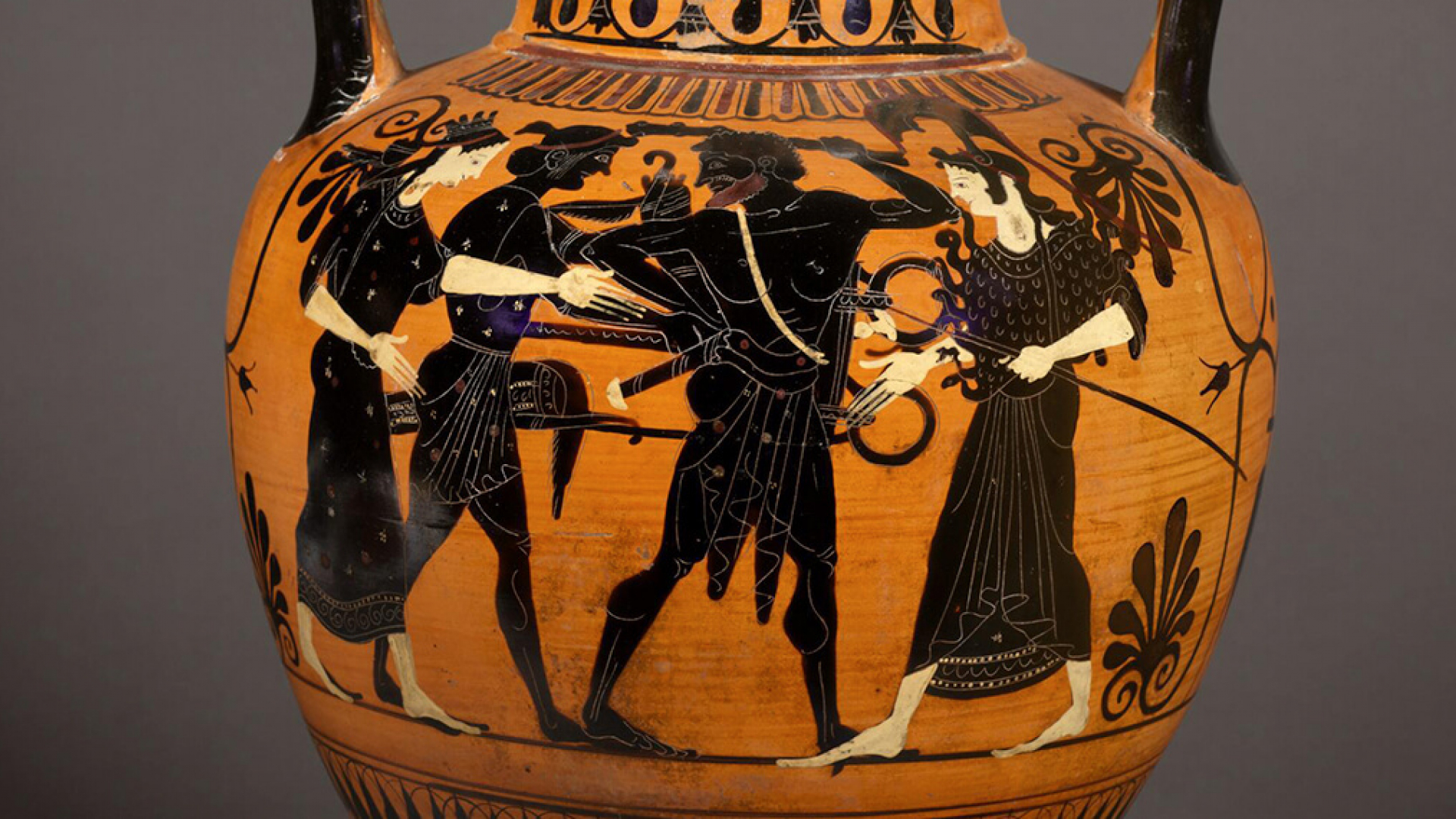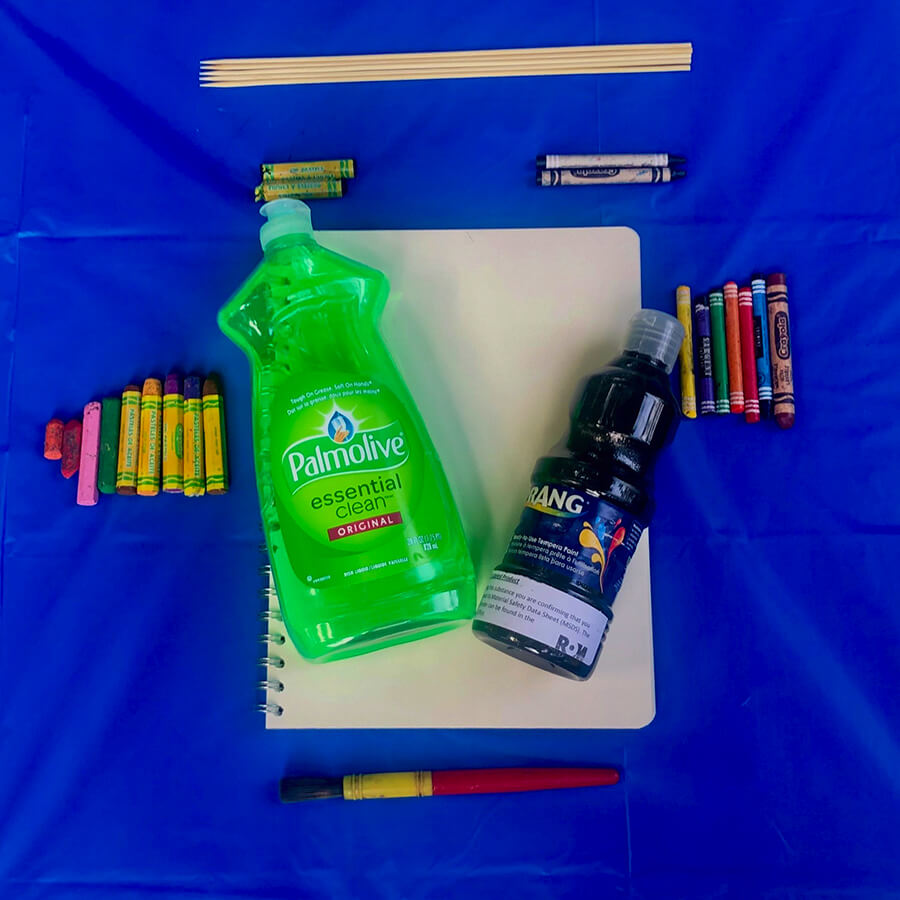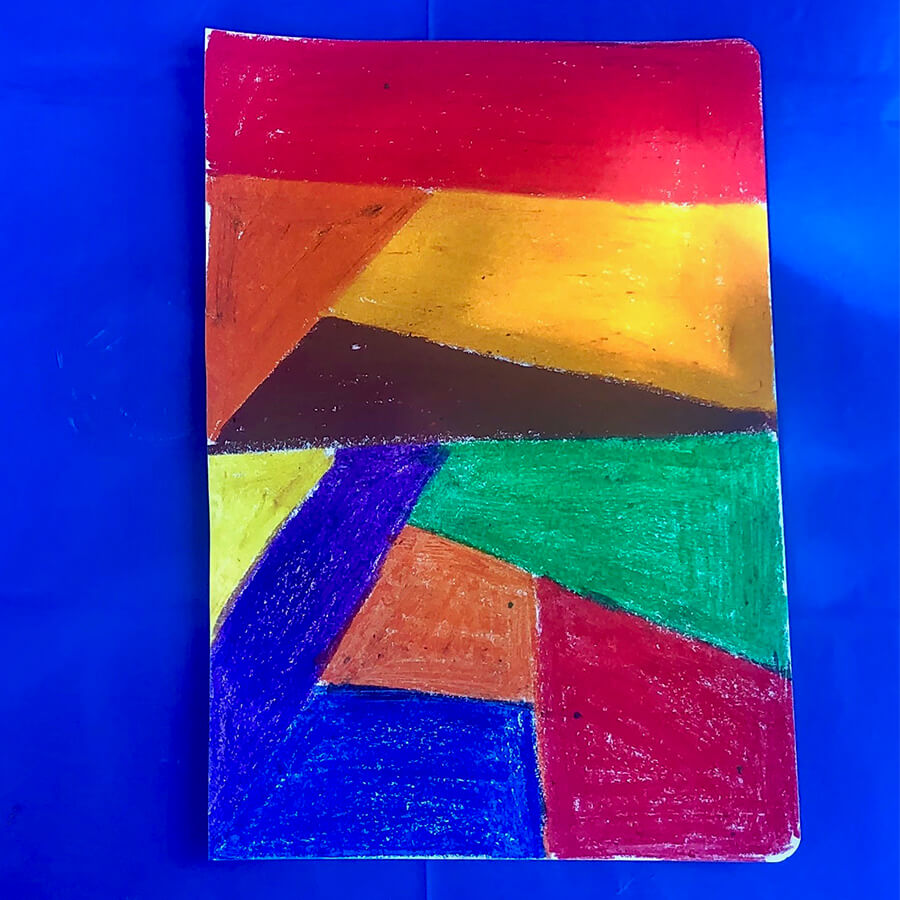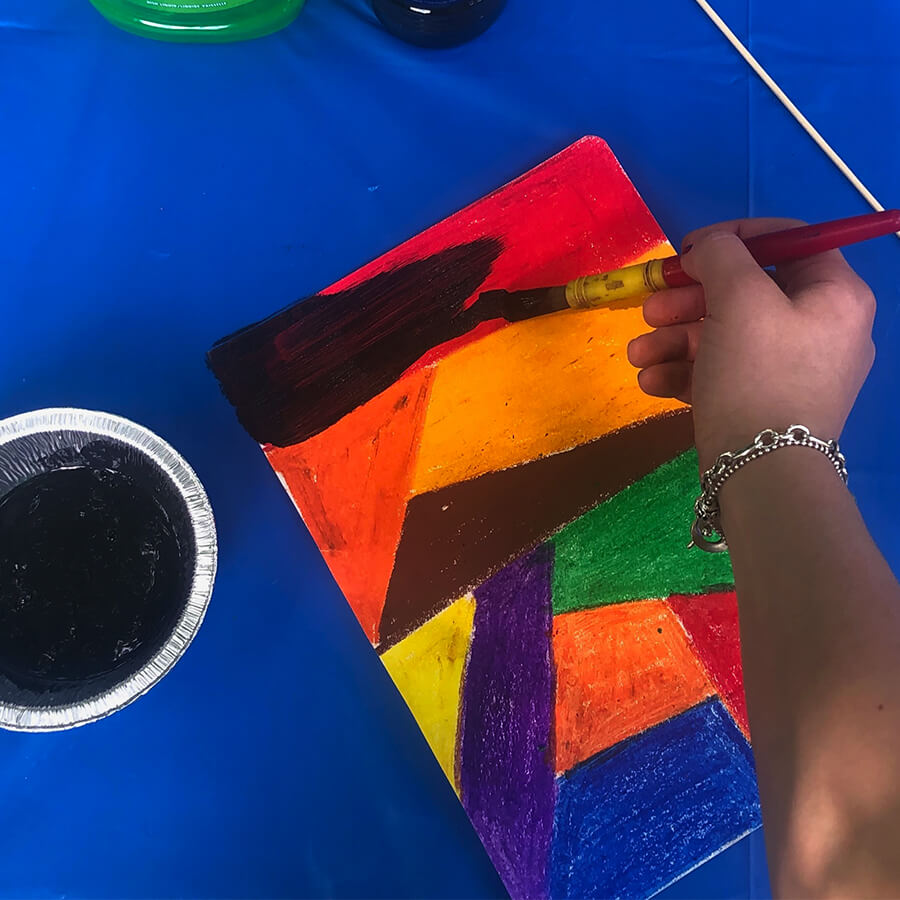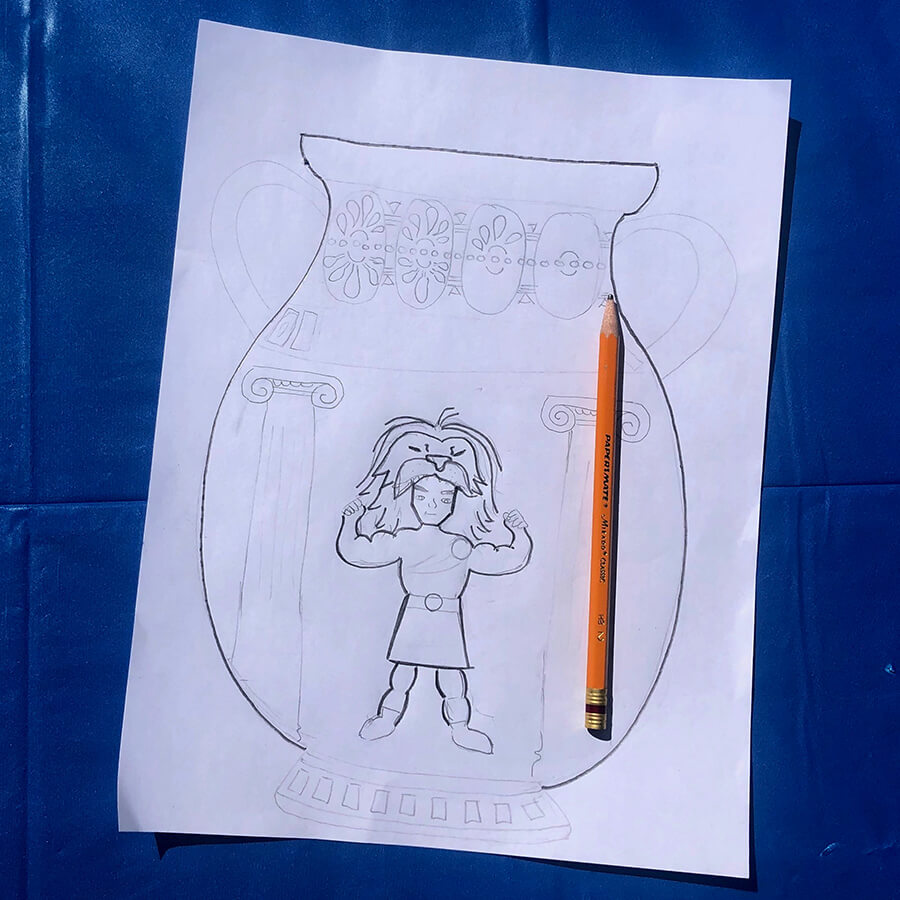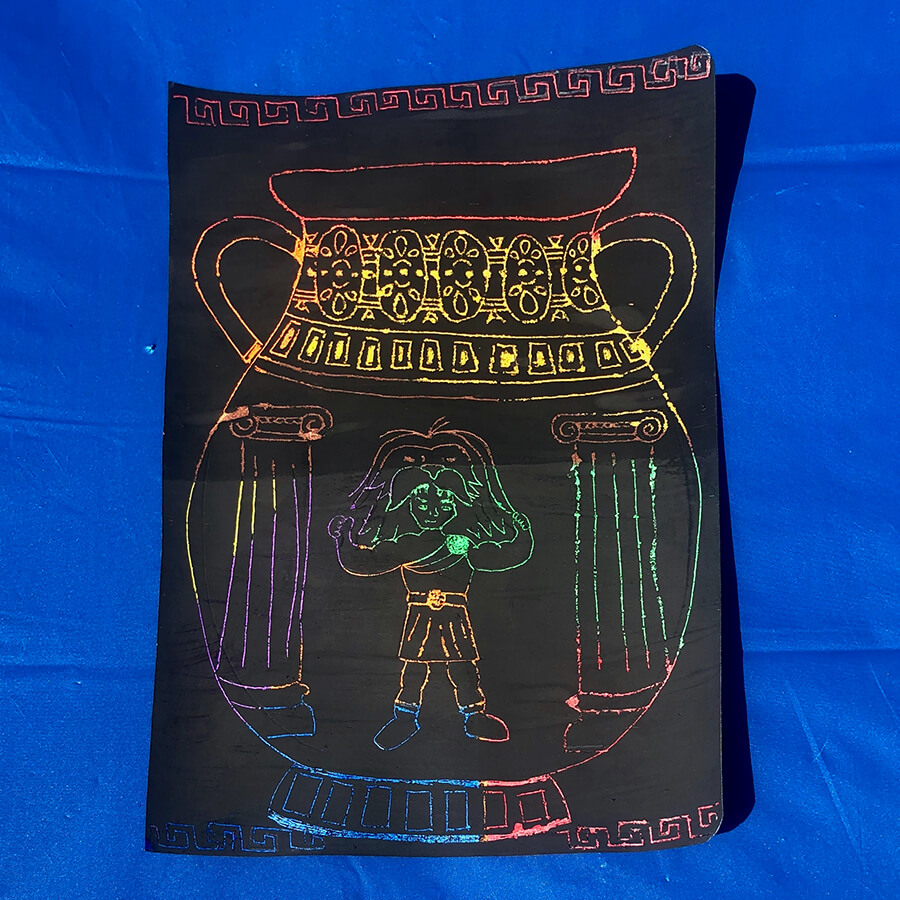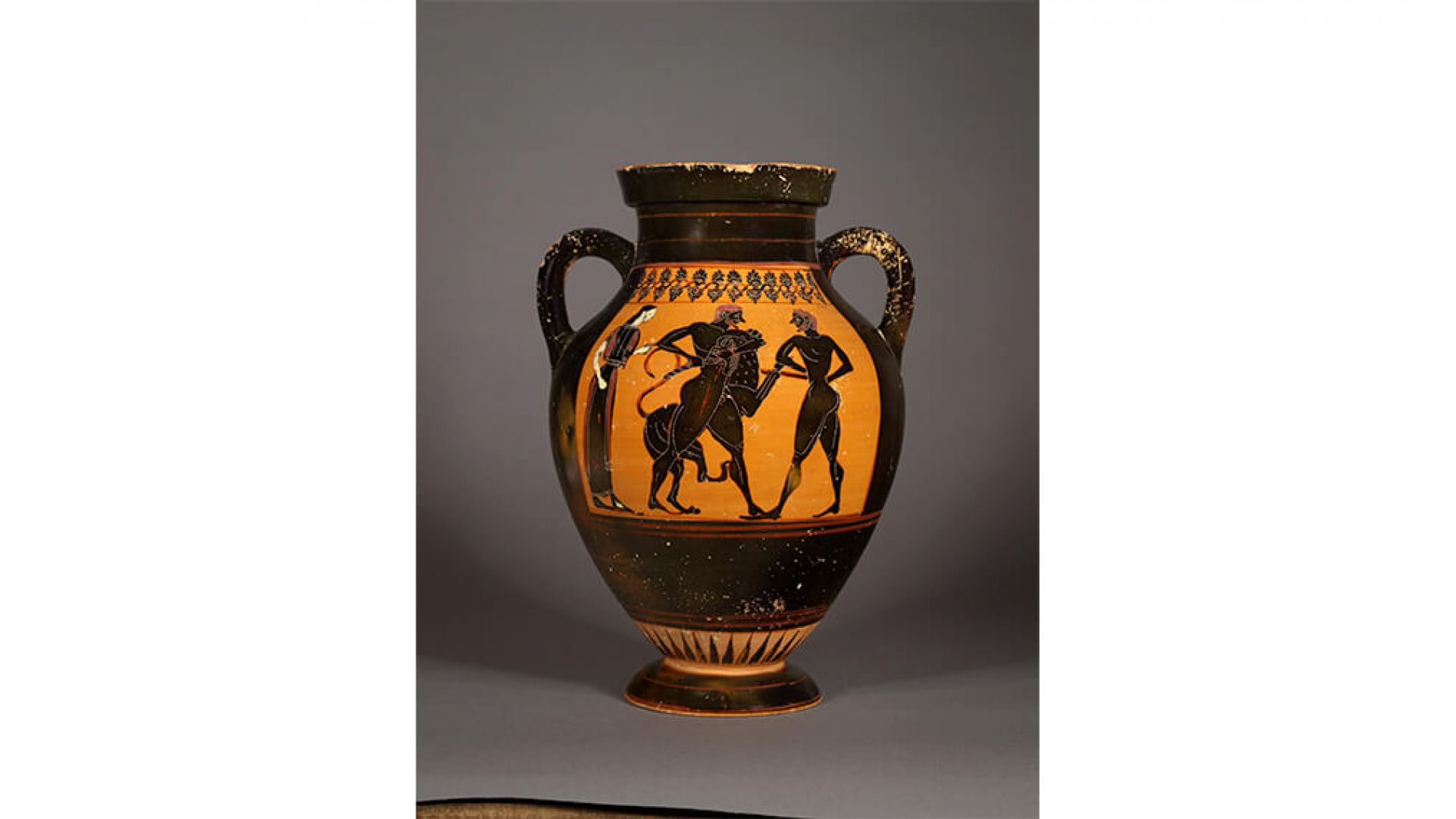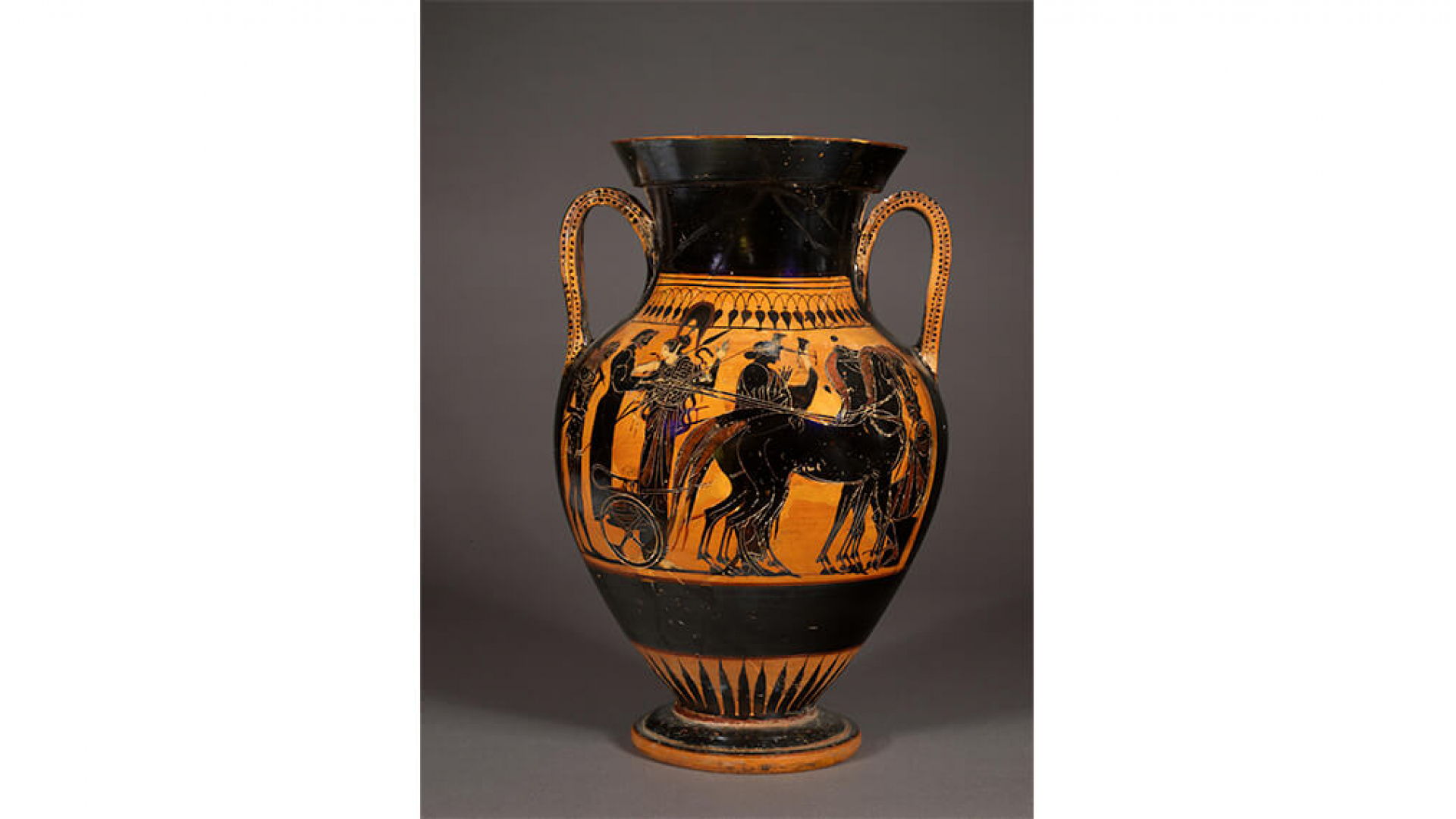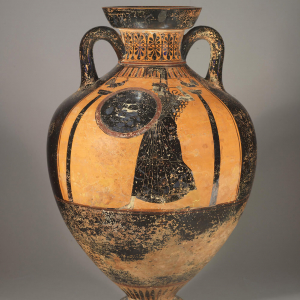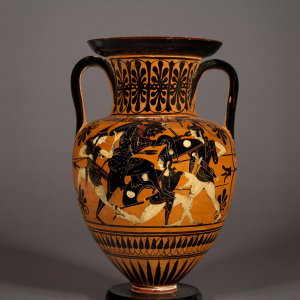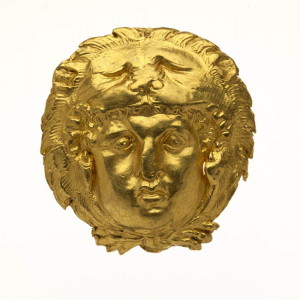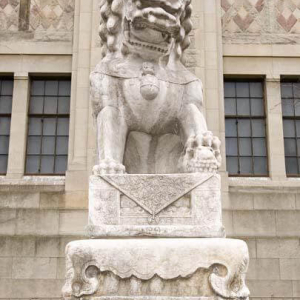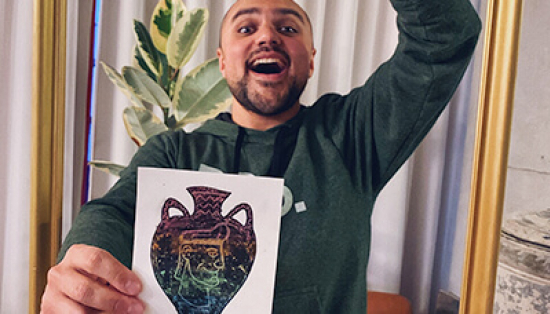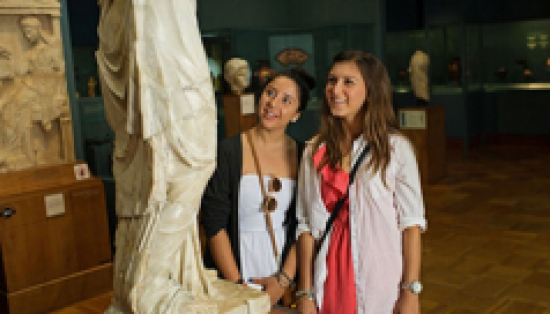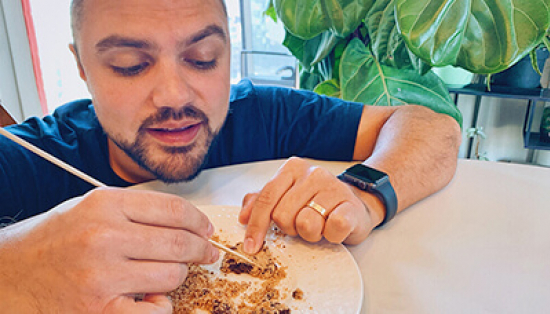Χαίρετε (hello) Art-ventures! Grab your crayons and paint and join us to make DIY scratch art!
Check out the craft below—while you are getting set up, scroll down and be inspired the fascinating tale of Herakles and his face-off with the Nemean Lion. Then, discover the ancient craft of Greek amphora art!
Materials:
- Paper (thick paper or Mixed Media paper preferred)
- Various colours of crayons or oil pastels
- Black paint and dish soap mixture (you could also use black oil pastel or crayon)
- Skewer or toothpick
Grab the materials you will need for the activity. Make sure you put down a drop sheet or some paper to protect your table. There are many ways you can make scratch art—we’ll give you some options in the steps below!
1. Colour your entire paper with colourful oil pastels or crayons. Make sure to push hard with your colouring utensil so you fill in all of the white spaces!
For our art, we coloured the top half of the page with oil pastel and the bottom half with crayon to show that both materials work well. Oil pastel is just a little bit easier to fill in all those pesky white spots.
If you want to be true to the style of Greek amphorae, use reds, oranges, and yellows to colour your background. Or get creative and use all of your favourite colours! Just make sure that you do not use black—that will be our top layer.
Colour the page however you wish—horizontal stripes, random shapes, all patterns work! But this background will be covered, so don’t draw any pictures that you’ll miss!
2. If you are using paint, in a cup or bowl, mix black tempera paint with a few drops of regular dish soap. The dish soap will help the paint stick to the waxy colouring surface. If you are using black crayon or pastel, skip this step.
3. Use your paint mixture, black crayon, or black oil pastel to cover the entire page.
If you are using paint—when your paint is dry, you can very (very) lightly use a pencil to draw your sketch on your black sheet.
In the famous Greek myth, Herakles was a demi-god, or half-god, born with superhuman strength. His mother was Alkmene, a mortal, and his father was Zeus, King of all Gods. Zeus adored Herakles and wanted him to be the next great hero of Greece.
One day, when Zeus’s wife Hera (Goddess of Family and Marriage) was particularly upset with Zeus, she decided to target his favourite demi-god son for revenge. She put Herakles into a trance that made him do despicable things.
When Herakles learned of his actions, he was sad and confused, and prayed to the gods for help. To make up for his behaviour, Herakles was told to complete 10 labours, or challenges, for his cousin King Eurystheus.
The first labour was to defeat the Nemean Lion—a monstrous animal with impenetrable golden fur and sharp claws that could pierce any armour. Herakles trekked down to the menacing cave that housed the monster and, using his incredible strength, vanquished the lion. Herakles used the lion’s powerful claws to remove its magical fur and made his own lion-pelt armour.
Take a look around your house and think of all the containers that hold your food. You might see items like milk bags, juice cartons, cereal boxes, big bottles and little bottles, jars tall and small. In ancient Greece, people stored food in clay jars called amphorae.
Some amphorae were embellished with striking paintings that told stories—exciting sporting events, important people, or tales from mythology. Artists only had black and reddish-brown colours to work with, so they would often differentiate people using defining characteristics. For example, Herakles’s story of the Nemean Lion was well-known, so his famous lion-pelt armour became an easy way to spot him in amphorae art. And Athena (Goddess of Wisdom, Strategy, and Battle) is depicted on many Olympic-themed amphorae, donning her warrior helmet, iconic aegis (shield), and spear.
Though amphorae were simple containers, they became important storytelling devices and beautiful ornamentation in Greece. Today, they have helped archaeologists and historians learn more about ancient Greek lifestyle, culture, and religion.
From left to right: Attic black-figure Panathenaic amphora showing Athena Promachos and athletes in a foot race, 915.24. Appliqué in the form of a head of Herakles, 998.19.1. Figure of a female guardian lion, 923.24.218.B. ;Attic black-figure amphora showing Herakles fighting Amazons, 919.5.84.
Put on your historian hat and see if you can find these Greek legends when you're next at the Museum to beat this ROMKids challenge!
Make your way to our Greek gallery to check out our vast collection of beautiful amphorae. Can you find Herakles? How about Athena? Remember their signature outfits!
While you’re hunting for Herakles and Athena amphorae, keep your eyes peeled for more Herakles-themed art. I spy with my little eye our hero’s sculpted head and a golden brooch of Herakles in his lion headdress.
Before you leave, be brave like Herakles and visit some lions—they’re not all as scary as the Nemean Lion. Search for the ROM’s protective lioness in our Life in Crisis: Schad Gallery of Biodiversity. And say hello to the two lion statues guarding the museum’s Queens Park entrance.

